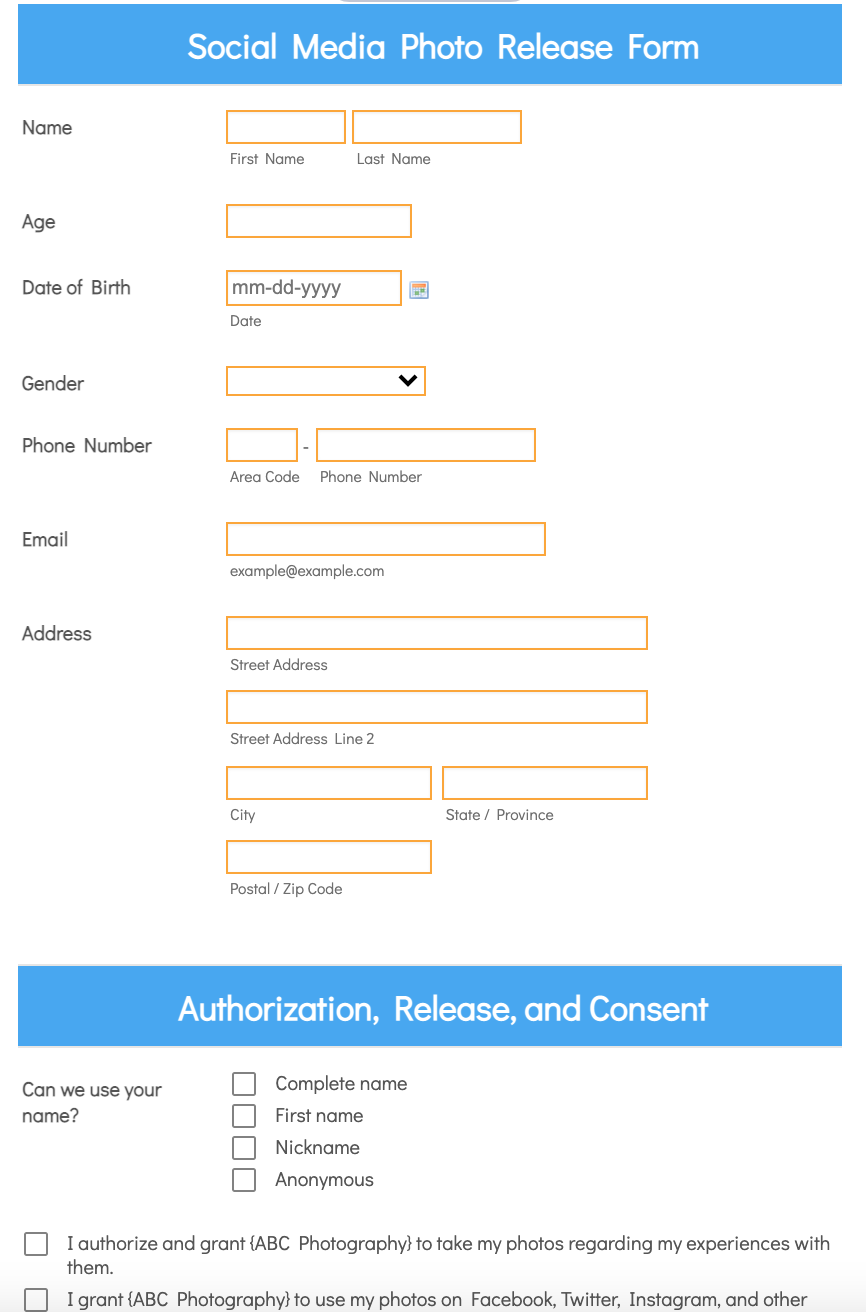If you’re a customer-facing business, such as a restaurant, a florist, or a physical therapy provider, a good way to grow your business is with photos of current customers enjoying your products or services.
But if you’re interested in this approach, the first thing you need to think about isn’t learning how to frame a photo — it’s how to get permission to use a photo of a customer for marketing purposes.
You can do a lot to boost your marketing efforts by incorporating photos of satisfied customers. And if you’re creative, you can make the experience fun for the customer in the photo while also attracting new customers.
Customer recommendations are the gold standard for effective marketing. The only marketing message more persuasive than a customer putting their name on their five-star rating, along with a note praising your customer service, is including a picture of them with their review.
Smartphones have made sharing great photos easy. But people own their images, so it’s important to recognize the differences between the types of photos people share.
For example, posting a selfie with a buddy on Instagram is an expression of fun and friendship. A selfie of you and a customer that you post on your business’s social media channels is marketing.
Pro Tip
Create consent forms, collect responses, and gather payments with Jotform’s all-in-one platform.
Determine if you need permission to use a photo
Copyright laws apply to even seemingly casual photos, such as a customer dining at your restaurant or admiring themselves in the mirror wearing clothes they just tried on at your boutique.
You might need their formal permission to post a photo on your social media channels or website, or you may have no obligation to ask for permission (though you might want to anyway, which we’ll discuss later).
There are two considerations when determining if you need permission to use a photo of a recognizable person. First, does the person in the photo have a reasonable expectation of privacy in the specific situation? Second, what is the image’s intended use?
Consider two friends meeting for lunch. They can’t expect as much privacy if they’re eating their meal at a sidewalk cafe as they could if one of them is having lunch at the other’s house.
A person in plain view of passersby in a public space has very little control over use of their image. If they’re inadvertently in the frame of someone taking a selfie that later goes viral, there’s not much they can do about it.
If someone ends up in the frame of a photo that shows the exterior of a restaurant, the owners may or may not have to get formal permission to use the image for their new advertising campaign or social media post. If the purpose of the photo is only to show that the restaurant offers outdoor dining and the faces of individual people aren’t easily recognizable, permission probably isn’t necessary.
If specific people are easily recognizable, however, then it’s important to get permission. Training about these legal distinctions is essential for staff posting images on your business social media feeds.
Keep in mind that everything you post on your business’s social media is considered commercial use. Any photo you post of customers doing business with you is considered marketing.
The advantages of asking for permission to use a photo
Instead of spending too much time wondering if you could use a photo of a customer without getting sued, you could simply ask the customer for permission to use their image. Instead of thinking about obtaining permission as dodging legal liability, think of it as being polite and considerate.
What might appear to you as just a good photo of friends shopping or dining or working out might cause them embarrassment if you posted it on social media.
While taking pictures is generally regarded as fun, signing legal forms is widely regarded as no fun at all. Your approach to asking for permission will make all the difference.
Before you pull out any forms, just ask if you can take a photo of the customer in your business. If you decide to post the photos, keep the request light. Tell them your lawyer makes you do it, then use a Jotform social media photo release template customized for your business.
Getting the customer to “autograph” a release will protect you and make them feel like a celebrity.



















Send Comment: